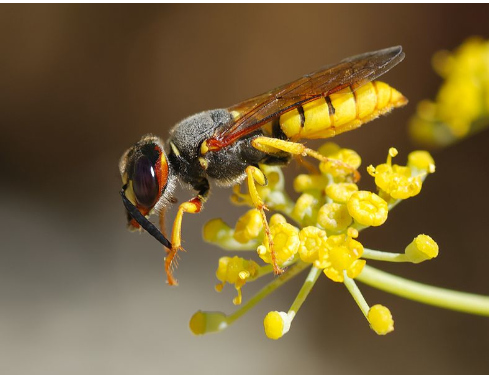Dr. Beewolf
Titus 2:1, 4
“But speak thou the things which become sound doctrine: … That they may teach the young women to be sober, to love their husbands, to love their children….”
 It took medicine thousands of years to discover antibiotics and learn how to use them. Now it appears that a wasp called the European Beewolf has been using an antibiotic all along.
It took medicine thousands of years to discover antibiotics and learn how to use them. Now it appears that a wasp called the European Beewolf has been using an antibiotic all along.
The Beewolf builds a burrow in sandy ground to lay its eggs, where the hatchlings will spend four to nine months after they hatch. She also leaves a spot of white goo in the nursery chamber. Then the Beewolf catches a bee, paralyzes it with a sting, and returns it to her burrow. She will stock each nursery chamber in the burrow with up to five bees. Scientists have long wondered what the white goo was. Now research has shown that this substance is laced with a new species of bacteria that live on the wasp’s antennae. It turns out that this species of bacteria makes an antibiotic that apparently protects the hatchlings. When scientists separated a clutch of 15 wasp larvae from the goo, only one made it to adulthood. On the other hand, in a clutch of 18 larvae who had access to the goo, 15 made it to adulthood.
Obviously, the Beewolf did not discover this use of an antibiotic and learn how to use it to protect its children. Rather, the Beewolf’s Creator – Who created antibiotics in the first place – built this behavior into the Beewolf to help it survive.
Prayer: Father, I thank You for Your love and care of Your entire creation. Help me to see Your love for me in Jesus Christ. Amen.
Author: Paul A. Bartz
Ref: Science News, 3/12/05, p. 166, S. Milius, “Bacterial Nanny.” Photo: European Beewolf, a solitary wasp. By alvesgaspar CC by SA 3.0.
© 2020 Creation Moments. All rights reserved.